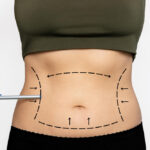Understanding the Different Types of Dental Treatment
When it comes to dental treatment, there are several options available depending on the needs of the patient. Dental treatment can range from routine preventative care, such as cleanings and check-ups, to more advanced procedures, such as root canals, crowns, and dental implants. Preventive dental treatment is crucial in maintaining oral health and avoiding more serious issues down the line. For patients with existing dental concerns, restorative treatments such as fillings or bridges may be necessary. Additionally, cosmetic dental treatment like teeth whitening or veneers can help enhance the appearance of your smile. It’s important to understand the different types of treatments available to choose the one that best meets your oral health needs.
Preventive Dental Treatments: The Key to Long-Term Health
Preventive dental treatment is the first step in maintaining good oral health. This includes regular dental cleanings, fluoride treatments, and dental sealants. By visiting your dentist regularly, you can prevent many common oral issues, such as cavities, gum disease, and bad breath. A key component of preventive dental treatment is early detection, allowing your dentist to identify any potential problems before they become more serious. This proactive approach to dental health helps avoid more costly and invasive treatments in the future. Routine check-ups also provide an opportunity for patients to ask their dentist questions about their oral health, helping them stay informed about the best care practices.
Restorative Dental Treatment: Fixing Damage and Restoring Function
For patients who need to address issues like cavities, tooth decay, or damaged teeth, restorative dental treatment is necessary. This can include treatments such as fillings, crowns, bridges, or root canals. Fillings are used to restore teeth that have cavities, while crowns are placed over teeth that are severely damaged. Bridges can replace missing teeth, while root canals are used to treat infections in the tooth’s pulp. Restorative dental treatment is designed to help restore the function of your teeth while improving their appearance. Depending on the severity of the damage, your dentist may recommend one or more of these treatments to restore your smile and dental health.
Cosmetic Dental Treatments: Enhancing Your Smile
Cosmetic dental treatment focuses on improving the appearance of your smile. Procedures such as teeth whitening, veneers, and bonding can significantly enhance the aesthetic of your teeth. Teeth whitening is a popular treatment that helps remove stains and discoloration caused by age, food, or smoking. Veneers are thin shells of porcelain placed over the teeth to cover imperfections like chips, gaps, or uneven spacing. Dental bonding involves applying a resin material to the teeth to correct minor imperfections. With cosmetic dental treatment, patients can achieve a brighter, more uniform smile, boosting their confidence and self-esteem.
Dental Implants: A Permanent Solution for Missing Teeth
For patients with missing teeth, dental implants offer a long-term solution. Dental treatment with implants involves surgically placing a metal post into the jawbone, which serves as a replacement for the missing tooth root. Once the implant integrates with the bone, a crown is placed on top to restore the tooth’s appearance and function. Dental implants are durable, natural-looking, and provide a permanent solution to missing teeth. Unlike dentures, which may need to be removed for cleaning, dental implants offer the convenience of permanent, hassle-free teeth. They are one of the most effective and reliable forms of restorative dental treatment available today.
Emergency Dental Treatment: Addressing Urgent Issues
Emergency dental treatment is necessary when an urgent dental issue arises, such as a severe toothache, broken tooth, or dental trauma. Whether it’s caused by an accident, injury, or infection, immediate care is needed to prevent further damage and alleviate pain. Common forms of emergency dental treatment include tooth extractions, temporary fillings, and addressing infections with antibiotics. If you experience sudden pain, swelling, or noticeable changes in your teeth or gums, it’s important to seek professional care as soon as possible. Prompt treatment can help save teeth and prevent complications, ensuring a quicker recovery.
Choosing the Right Dental Treatment for Your Needs
When choosing the right dental treatment, it’s important to consider your specific needs, budget, and goals. Consulting with a qualified dentist is key to developing a treatment plan that addresses your oral health concerns. Your dentist will evaluate your condition and recommend the most appropriate course of action, whether it’s preventive care, restorative treatments, cosmetic procedures, or a combination of treatments. Keep in mind that the best dental treatment plan may involve regular check-ups, good oral hygiene, and lifestyle adjustments to maintain long-term results. It’s also important to understand the costs, time commitment, and potential risks involved in each treatment option.
Conclusion
In conclusion, dental treatment is a broad field that encompasses various options to improve and maintain your oral health. From preventive care to cosmetic enhancements, there is a wide range of procedures available to address different dental concerns. Whether you need a routine cleaning, restorative work, or a complete smile makeover, the right dental treatment can significantly impact both your appearance and your overall health. Working with a skilled dentist ensures that you receive the care that best suits your needs. By staying informed about your options and following your dentist’s recommendations, you can achieve optimal oral health and maintain a beautiful, confident smile.
Frequently Asked Questions
- What is preventive dental treatment?
- Preventive dental treatment includes routine cleanings, fluoride treatments, and check-ups to prevent cavities, gum disease, and other dental issues.
- How much does restorative dental treatment cost?
- The cost of restorative dental treatments can vary widely depending on the procedure, with fillings typically costing $100-$300 and crowns ranging from $800-$1,500.
- Are cosmetic dental treatments covered by insurance?
- Most cosmetic dental treatments, such as teeth whitening or veneers, are not covered by insurance since they are considered elective procedures.
- How long does it take to recover from a dental implant?
- Recovery from dental implants typically takes several months, but patients can expect to resume normal activities within a week or two after the surgery.
- Is emergency dental treatment expensive?
- Emergency dental treatment can be more expensive than routine care, but it is necessary to address urgent issues to prevent further complications.
- What is the best way to maintain good oral health?
- Brushing twice a day, flossing daily, eating a balanced diet, and visiting your dentist regularly for check-ups are essential for maintaining good oral health.
- How do I know if I need restorative dental treatment?
- If you have missing, cracked, or damaged teeth, or experience tooth pain, you may need restorative dental treatment to restore your oral health.
- Can I get cosmetic dental treatment if I have dental problems?
- Yes, cosmetic dental treatments can often be combined with restorative work to improve both the function and appearance of your teeth.
- How long does it take to complete a full dental treatment plan?
- The length of time depends on the type of treatment required, but a full dental treatment plan could take from a few weeks to several months.
- What should I do if I have dental pain outside of office hours?
- If you experience dental pain outside of office hours, contact your dentist for guidance or visit an emergency dental clinic for immediate care.












